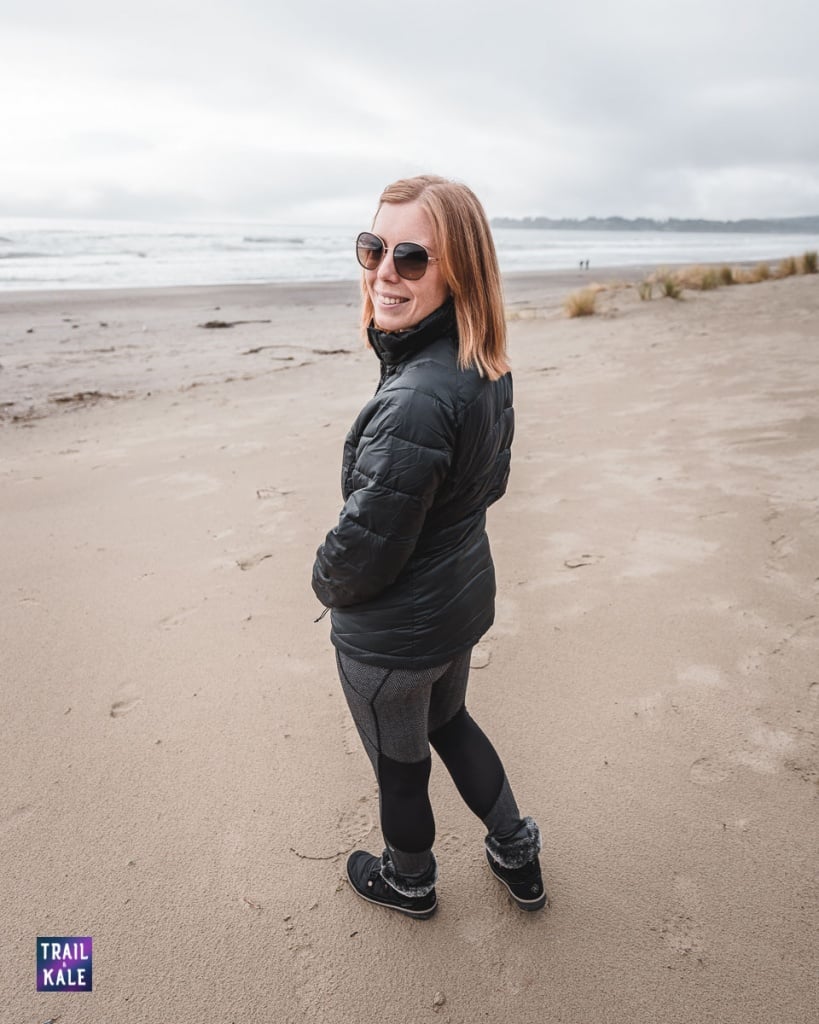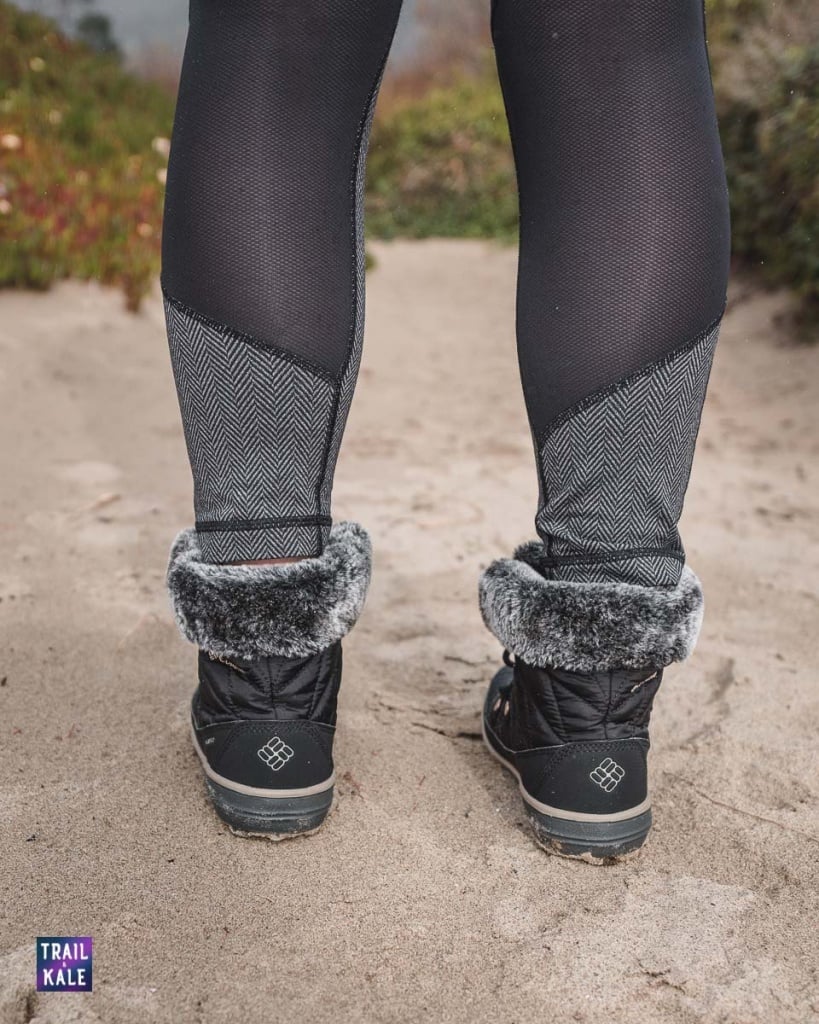For years I made do with having cold feet throughout Winter and the colder Fall and Spring months. I have skinny little feet with apparently poor circulation, which means they get cold easily and take a long time to warm back up.
As a runner and active person, over the years I’ve become more focused on doing my best to look after my body, and in particular care for my feet, which carry me loyally for miles on runs, hikes and everyday activities.
Having cold feet is not pleasant and I can’t help but think it’s not great for the joints and soft tissues to be asked to function in a cold, stiff state. So, without further ado, here are my top five tips for keeping your feet warm during Winter hikes and everyday adventures.
1. Choose the best type of socks for keeping your feet warm
I swear by Merino wool socks. Merino wool is breathable and has wicking properties, meaning it can pull moisture (such as sweat) away from your feet, helping to keep them dry and comfortable.
I avoid wearing cotton socks when it’s cold and wet outside, as cotton, once wet, can take a long time to dry and will not retain any warmth.
The same applies to running socks – almost all of my favorite running socks are made from merino or another natural wool blend.
While some people tend to think thicker socks means warmer feet, I find that wearing socks that are too thick often has the opposite impact. Wearing thick socks may make your shoes or boots fit tighter than normal, which can be uncomfortable and may affect the circulation in your feet, which could make them colder.
I normally opt for thinner socks, with some heel and toe cushioning, but nothing too thick.
The same applies to my running and skiing socks – thicker isn’t necessarily better (or even warmer).
2. Wear waterproof winter boots to keep your feet dry
If you have wet feet then the effect of water evaporation, especially in cold air, will quickly make your feet very cold.It’s also very uncomfortable to have wet feet when hiking or just walking around town, and can lead to other issues such as sore skin and blisters, so it’s really important to keep your feet dry – dry feet are happy feet!
The best way to keep your feet warm on winter hikes is to invest in a good pair of waterproof boots, which will stop rain, slush and snow from soaking through and making your feet wet.
Keep an eye out for waterproof hiking boots that are also breathable, as the breathable fabric will help remove moisture (such as from your feet sweating) from the boot, rather than retaining it, which can make your feet damp.
3. Invest in insulated winter boots
I also make sure that winter boots I wear also feature a good amount of insulation to help retain warmth.
It’s great to have waterproof hiking boots, but I find my winter boots also need to include added insulation to pair with some good merino socks, for a winning combination to keep my feet warm when on winter hikes and simply just going about day-to-day life
The day I bought my first pair of insulated boots that I could wear commuting in winter, as well as during apres-ski sessions… my life changed!
The winter boots I’m wearing in these photos are from US sportswear brand Columbia, and are their ‘Heavenly Shorty Omni-Heat’ boots.
They include the waterproof and insulation features I crave in a pair of winter boots, and are also lightweight, easy to put on and do up, and feel like I’m wearing a comfortable pair of snug slippers, once on – except they’re slippers with a great outer sole which offers good traction in the wet and slush.
The Heavenly boots are super-versatile – I’m wearing them every day as they’re great in the cold, the rain, and even milder winter temperatures, and look just as good with running tights or leggings as they do with jeans.
I ordered my Columbia boots (and the Columbia Jacket pictured – which is the ‘Columbia Whirlibird IV Interchange Jacket’) from Zappos.com.
Zappos offers fast, free delivery and 365-day returns, which is a great service for buying shoes and clothing that you need to try on to make sure it’s a good fit.
I also appreciate that their reviews feature allows rating of boots and shoes by fit, width, and level of foot support – this helps you choose the right size in the first place before you place an order.
Having a good amount of insulation in my winter boots is particularly important to me as I have very skinny, bony feet that get cold easily, even in the summer.
I also have a condition called Raynaud’s Syndrome that affects my big toes… I started having this issue several years ago, and at first, I didn’t know it had a name.
Apparently, it’s not known to be a serious condition – it essentially means that the circulation in some of my toes can be restricted and the affected toes go white and get very cold!
It makes walking or running uncomfortable and lasts for however long it takes until I can get my feet warm enough to improve the circulation sufficiently.
4. Wearing layers of warm clothes also helps to keep your feet warm
When you start to get cold, your body reduces blood flow to your extremities (such as hands and feet) to keep your core and vital organs warm.
This has the effect of allowing your extremities to get cold as a result of the reduced blood flow.
So in order to help maintain a healthy blood flow to your feet, you need to ensure the rest of your body isn’t fighting the cold.

In particular, a warm, waterproof and insulated jacket for your body and a hat to reduce heat loss from your head will be the most useful items of clothing for going out hiking in winter, which will, in turn, help keep your feet warm on those winter hikes (or commutes, supermarket-runs, etc etc).
Similarly to the Columbia Heavenly boots, my Columbia Whirlibird jacket is super-versatile.
It has two layers – a waterproof outer shell, complete with a hood, arm vents, and big fleece-lined pockets, and a puffy inner layer, which also features zip-up fleece-lined pockets and the same ‘Omni-Heat’ metallic lining as the boots, which help to reflect heat back on to your body to help you keep warm.
While I’m a big fan of bright colors, a classic black/dark grey jacket is perfect when you need a versatile jacket for many different functions, especially if it’s going to be used for a commute over workwear, for example.
5. Keep feet moving to improve circulation
My school gym instructors would often have us running around in the cold, stomping our feet, doing jumping jacks and shaking our hands, to get warmed up before or mid-class.
At the time, I never wanted to do it, but it always worked – soon those cold hands and feet got warmer, and running around and exercising was a little more appealing when my feet weren’t numb with cold.
When you think about it, it makes sense that if you get your body moving, blood is pumping around your body more freely and rapidly, bringing warm blood from your core out towards all other parts of your body.
If you have lightweight hiking boots or shoes, then why not stride into a brief run-burst (or perhaps some jumping jacks) to boost your circulation and help keep your feet warm? Go on, those feet deserve it!
Let me know how you keep your feet warm in the comments below!









Hey Helen, thanks for the tips on feet warming. I have had both frostbite and frost nip so I get it about the toes.
Have you tried snack baggies? They help just a little but can be helpful when you are right at your limit temp wise. Also some of the neoprene type toe warmers help but I trim away the bottom so the extra layer won’t lead to sub dermal blisters (very painful!).
Hi James, I have not! I’m pretty reluctant to put anything additional in my shoes to avoid blisters/rubbing, but the baggies and neoprene toe warmers are great tips to try, for sure. Sounds like you know all about having cold feet, sorry to hear about getting the frostbite!